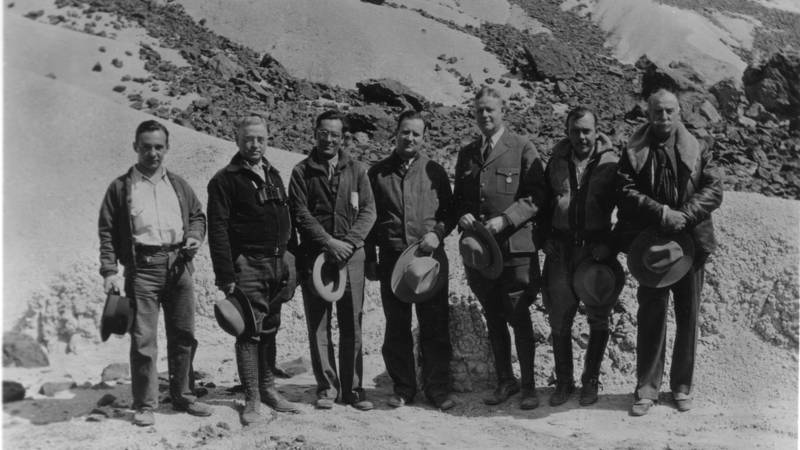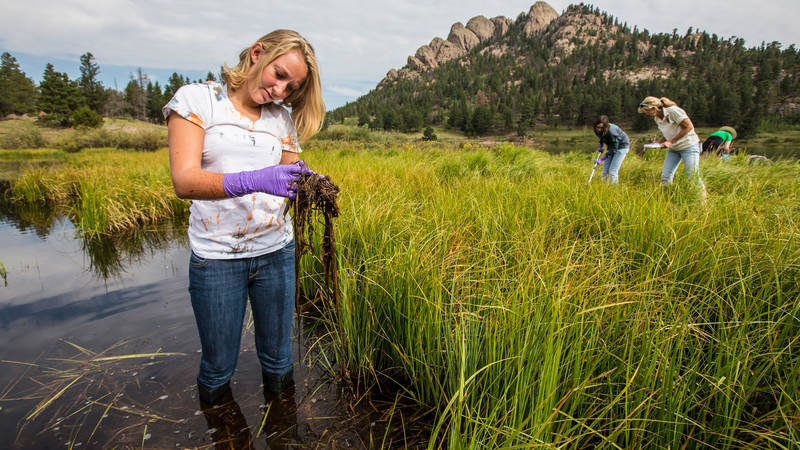National parks have a long history of supporting scientific discovery. Let’s continue to fund the world-class research at our country’s most iconic and inspirational places.
The spectacular sites in our National Park System are not just ideal places to enjoy the wonders of nature and learn from pivotal events in America’s history. They are also critical hotspots for scientific research and discovery.
Respected scientists such as George Wright, Aldo Leopold and Joseph Grinnell were among the first people who helped create national parks. Today, the parks continue to serve as living laboratories for scientists and resource managers, as well as places to teach the next generation of conservation leaders. Their resources, accessibility, unspoiled nature and remarkable geographic distribution make them the greatest collection of study sites a scientist could possibly ask for. Additionally, these beloved places capture the imagination and inspire a strong, national conservation ethic.

Call of the Wild
Eighty years ago, a biologist named George Melendez Wright reminded us that wolves, bison, and grizzlies came before people. And because of him, they still do.
See more ›Yet an appreciation for hard-earned science has been dropping sharply in our current political climate, in ways that could profoundly harm the parks. The Trump administration has proposed devastating cuts to science-based agencies such as the Environmental Protection Agency, and both Congress and the administration have reversed policies based on sound science affecting important issues such as climate change and water quality. Meanwhile, people question the validity of facts. It is not always clear why science is so important to these policies and decisions, giving the impression that it is a partisan decision-making tool.
But science has no political agenda. Science is a process that explores how to best answer questions through a carefully structured approach. Science has an extremely rigorous set of filters, relies on carefully collected data and repeatable testing, and is subject to a grueling system of review. Science doesn’t care what we believe, because it is based on objective information — not opinions.
The polarized perception of science we are seeing today is inconsistent with the history of the National Park Service — and for that matter, the history of the United States.
Science and scientific discovery have a surprisingly strong legacy in our parks. Researchers are working actively in nearly 300 of the 417 park sites, spanning all fields of science, from light pollution to complex hydrology to bird migration. Even before they were parks, many of these iconic sites attracted scientists from across the nation to study the very things that make them unique, such as the geothermal features at Yellowstone and the complex water systems at Everglades. And for over a century, the National Park Service has seamlessly collected data that provides valuable baseline information on the natural world. Scientists can better understand air quality in the Great Smoky Mountains, for example, because park staff have been analyzing the air at the park for decades, providing a rich understanding of how the environment is changing. This data provides important insights to the entire field of ecology.
These examples of pivotal scientific research in national parks have forever changed how humans understand the world.

Want to Be a Park Scientist?
Counting birds. Looking for dragonfly larvae. Analyzing coyote scat? National park visitors can help the places they love by taking part in meaningful science around the country.
See more ›One of the most famous park scientists, Joseph Grinnell, carefully documented the distribution of mammals throughout Yosemite National Park as far back as 1914. He showed that the distribution of species corresponded to habitat, giving rise to what is known as “ecological niche theory,” groundbreaking work on the importance of each organism and its role in the health of the larger environment. Before this, researchers did not recognize how losing one plant or animal could have wide-ranging and sometimes devastating effects on an entire ecological system.
Many of us have heard of carbon-14 dating, a method of using radioactive isotopes to accurately determine the age of fossils and other biological artifacts. Did you know that nuclear physicist Willard Libby developed this process at what is now Tule Springs Fossil Beds National Monument? He used this technique to help date Tule Springs’ Pleistocene-era mammal fossils, which garnered him a Nobel Prize for Chemistry in 1960.
In the late 1890s, botanist Henry Cowles studied how plants interacted among the dunes of Indiana Dunes National Lakeshore, documenting how changing soil conditions from decomposed plants influenced the success of other plants. These discoveries helped develop an important principle called “ecological succession,” which informs our current understanding of how plants respond to ever-changing environmental conditions.
Researchers have been conducting the longest scientific study of predator-prey dynamics in the world for nearly 60 years at Isle Royale National Park. Begun by biologist Durward Allen in 1958 and carried on today by Rolf Petersen and others, this study of the relationship between wolves and moose has had a great impact on wildlife management and documents how changes in animal populations and habits have had ripple effects across the ecosystem.
In addition to great strides and successes, scientists have also analyzed our beloved national parks to chronicle the deterioration and abuse of the landscape, essentially teaching us what not to do and, in some cases, helping to restore what was lost. A few valuable lessons include:
- Restoring a key wildlife predator species. Decades after government-sanctioned programs effectively eradicated gray wolves from Yellowstone National Park and the surrounding region, researchers began to understand the critical role predators like wolves play in maintaining a healthy ecosystem. After consulting with wildlife experts, considering public comments, and creating a solid strategy, the U.S. Fish and Wildlife Service worked in cooperation with the Park Service to release gray wolves back into Yellowstone National Park in the mid-1990s.
- Helping streams and lakes recover from acid rain. A quick drop in the number of fish throughout Great Smoky Mountains National Park led researchers to discover that millions of tons of chemical pollutants from industrial factories and coal-fired power plants were entering the park over time via sheets of acid rain, and streams and lakes were no longer safe for park wildlife. Park Service scientists were key to securing air pollution regulations that reversed this trend — and today they are collaborating with universities to continue learning about the sources and effects of this pollution.
- Determining how human water use can affect natural systems, including wildlife. A tiny fish on the border of Death Valley National Park called the Devils Hole pupfish became endangered after groundwater pumping harmed its habitat, leading to a successful Supreme Court ruling that curtailed the groundwater pumping, allowing the fish to survive. Researchers continue to monitor and work to save the few species of pupfish that remain.
- Adapting to a constantly changing seashore. When you’re managing a coastal park with an ever-changing landscape, where do you put the visitor center? Where should you construct roads and visitor services? Scientists working on Assateague Island National Seashore in Maryland have long been studying the dynamic nature of wind, waves, tides and sediments. Add in the occasional hurricane, sea-level rise and an entire herd of wild horses, and you have one of the most challenging parks to manage. But that is exactly what Superintendent Debbie Darden is doing by using complex marine and coastal science for informed decision-making.
The long history of scientific achievement in national parks is an impressive one, but it’s also important to recognize that science is not always the answer.
Stay On Top of News
Our email newsletter shares the latest on parks.
Often, people expect science to tell us what to do. But science cannot tell us what our values are, and science cannot replace good decision-making. What it can do is enable us to make well-informed decisions and to predict the consequences and outcomes of our choices. Without the benefit of adequate scientific information, we cannot know how best to protect our national parks.
Scientific research has never been more important to our National Park System than it is right now. How our parks can adapt to threats like wildfires, flooding, species loss and other serious issues is uncertain. We must ensure that our Park Service continues to have access to the best available science and information to make sound and informed decisions — so we may all enjoy these places for generations to come.
About the author
-
 Ryan Valdez, Ph.D. Senior Director, Conservation Science
Ryan Valdez, Ph.D. Senior Director, Conservation ScienceRyan Valdez serves as Senior Director of Conservation Science for National Parks Conservation Association. He works to integrate multidisciplinary science into NPCA’s national and regional advocacy efforts to protect all 430+ US national park units.


